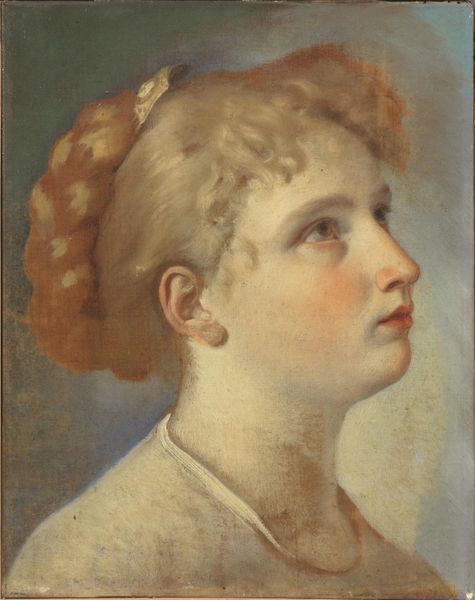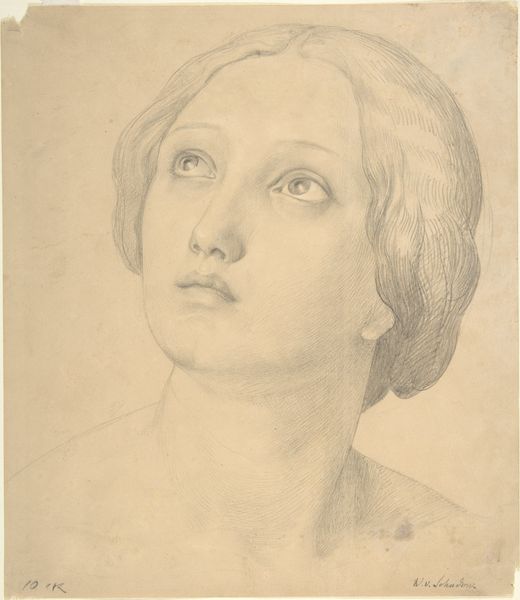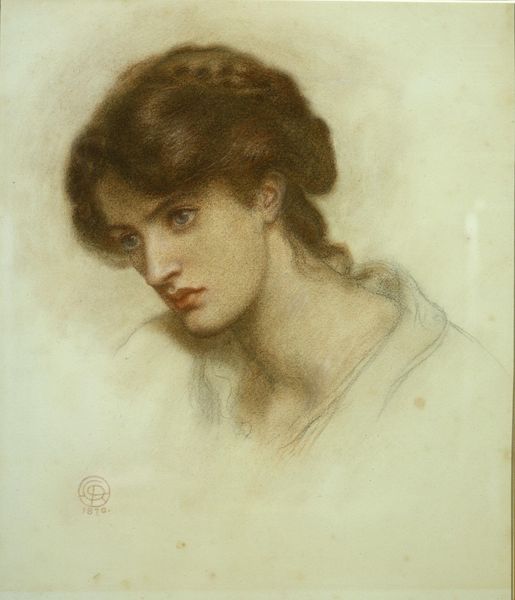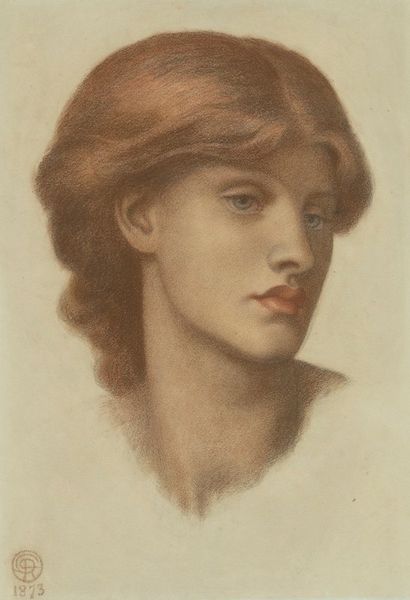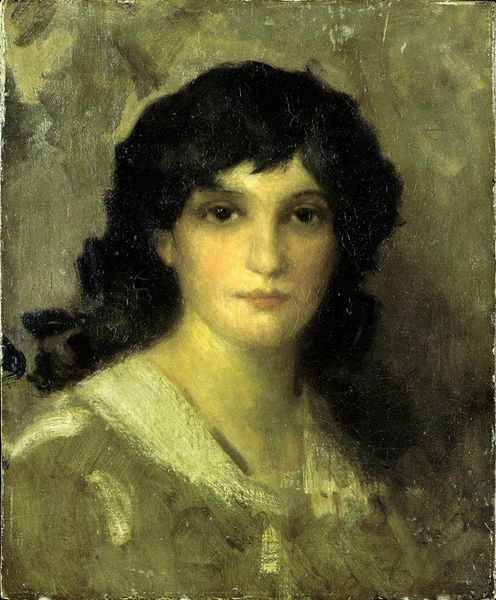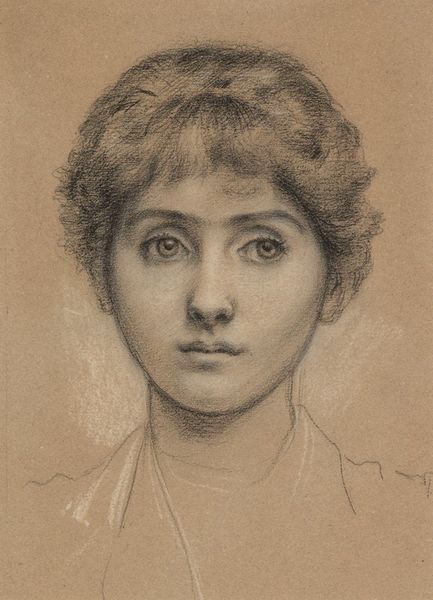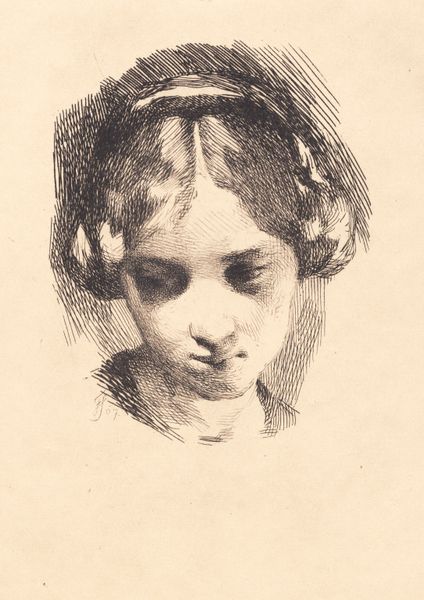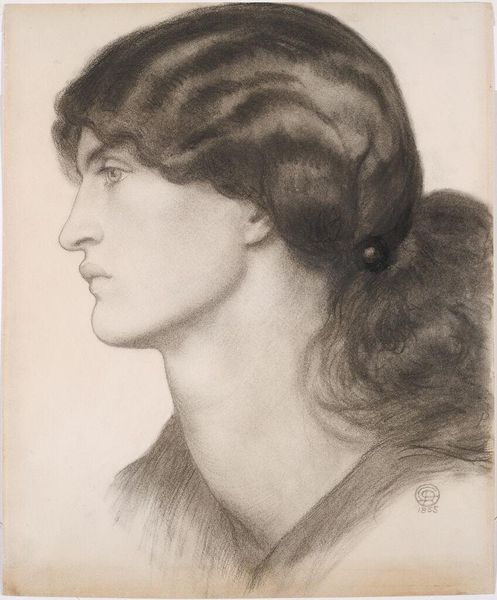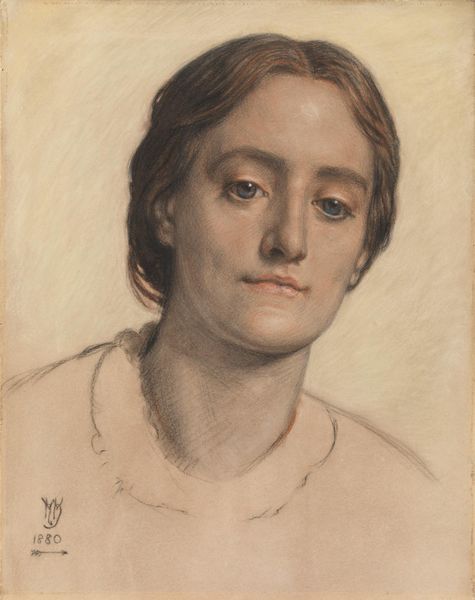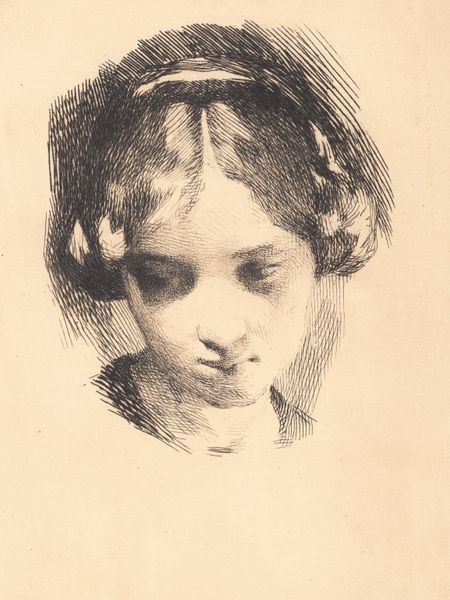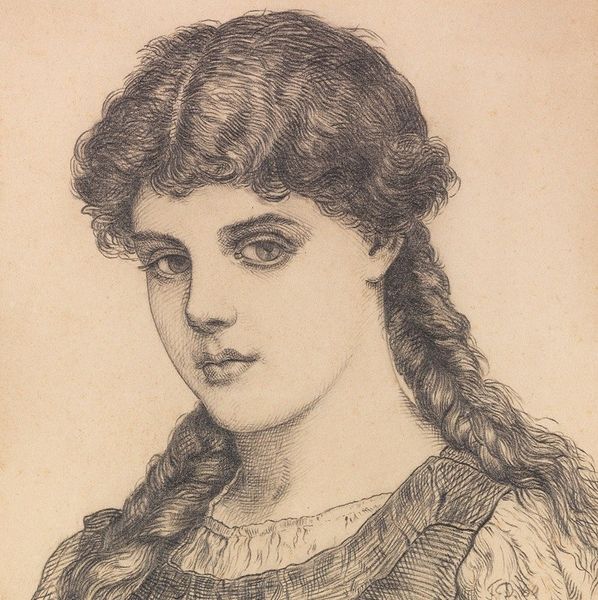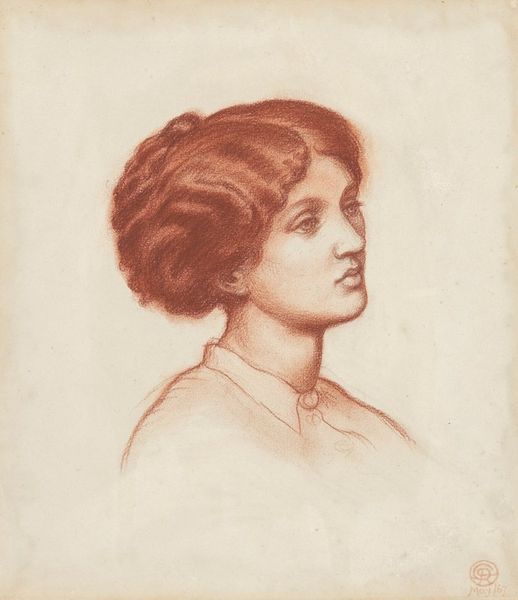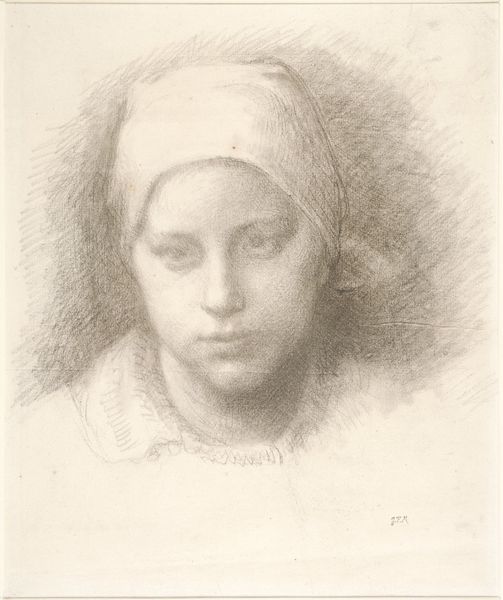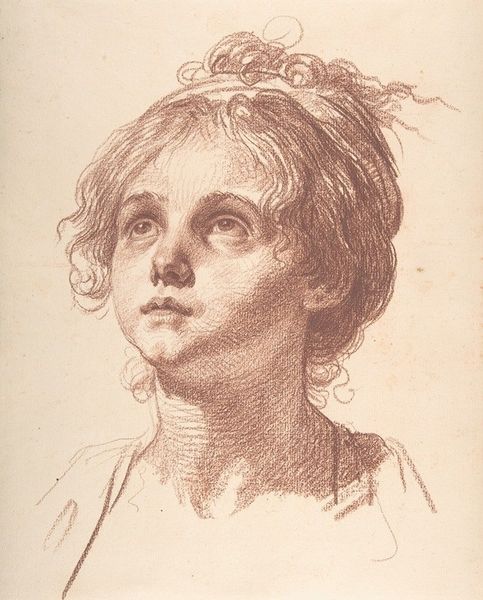
Dimensions: 34 x 50 cm
Copyright: Public domain
Editor: Rossetti’s “Fanny Cornforth,” a pencil drawing from 1868, captures its subject with incredible softness. The monochrome palette gives it an intimate, almost dreamlike quality. What historical and social narratives do you see woven into this portrait? Curator: It's interesting you mention "intimacy," because this piece is entangled with complex Victorian social dynamics. Fanny Cornforth was not only Rossetti's model but also his mistress and housekeeper, a relationship that existed outside the bounds of conventional Victorian marriage. This tension between respectability and hidden realities is central to understanding the Pre-Raphaelites. The intense, yet controlled, representation elevates her, yet stops short of complete idealization. Who do you think this was for, and how would it be viewed then? Editor: I’m not sure; was this intended for public display, or was it a more private expression of Rossetti’s relationship with her? And would a piece like this challenge Victorian ideals, or would it operate within them? Curator: That’s precisely where it becomes compelling. While portraits of this nature were somewhat acceptable, the depiction of Fanny, who occupied a lower social stratum, challenged the established social hierarchy in portraiture. These types of images would likely circulate amongst a closed circle of artists and patrons, but their accessibility to the broader public remained controlled. Her slightly direct gaze, breaking the standard submissive posture for women in art, does disrupt established codes of conduct. Don’t you think that a gaze makes this confrontational even now? Editor: I do! Considering how artworks and access to them are politicized – from whose stories get told to how these are viewed – really transforms how I see the Romantics. Thanks for illuminating the contextual backdrop. Curator: Indeed. Seeing how Victorian values informed the creation and consumption of such art enriches our understanding of it. And conversely, we may re-think today's public reception of art, given current socio-political contexts.
Comments
No comments
Be the first to comment and join the conversation on the ultimate creative platform.
